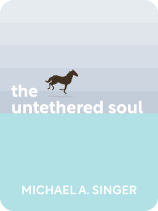

This article is an excerpt from the Shortform book guide to "The Untethered Soul" by Michael A. Singer. Shortform has the world's best summaries and analyses of books you should be reading.
Like this article? Sign up for a free trial here .
What is the Tao? How can living according to the principle of the Tao help you invite balance and harmony into your life?
“Tao” can be translated as “Way.” The core teaching of the Tao Te Ching, the classic text on Taoism, is the middle way of balance or moderation. All the great spiritual traditions teach the Tao, whether they call it that or not.
Read about the concept of the Tao and how it can allow your life to effortlessly flow along the highest path.
What Is the Tao’s Message?
Although it’s hard to capture the subtle concept of the Tao, you can approach it by looking at the extremes in any area of life. Consider the subject of food: Do we need food? Yes. Is it possible to eat too much? Yes. Is periodic fasting good? Yes. Is it good never to eat? No. Or consider the question of proximity in human relationships. Closeness is good, but too much closeness can lead to smothering and conflict. Some distance is good, but too much distance can lead to alienation.
The point is that the extreme ends of anything are like the opposite ends of a pendulum swing. The principle of complementary opposites, and of a middle way that holds them together in balance, runs through all phenomena. In Taoist terms, this implicit universal relationship is called the yin and the yang, representing a multitude of paired principles: contraction and expansion, non-doing and doing, weakness and strength, softness and hardness, passivity and activity, darkness and light, female and male, earth and heaven. Neither side is “bad” or “good.” The reality and interaction of the principles of yin and yang is just the nature of the universe.
The Tao is in the middle, the place where there’s no pushing or pulling, no excess in the direction of either of the implicit polar principles of whatever situation you’re contemplating. It’s like the eye of a hurricane: clear, tranquil, and unmoved as all things swirl around it.
Most people’s lives are stressful and difficult because they ride daily pendulum swings from side to side as they let events disturb them. This imbalance causes not only suffering but futility, because when you spend energy trying to maintain an extreme, you go nowhere. You end up serving the extreme itself instead of following the Tao through the middle. For example, if someone smokes for years, spends enormous time and money on it, then decides to quit, they’ll feel they have to engage in a huge motion in the other direction—applying self-discipline, wearing nicotine patches, undergoing hypnotherapy—to counterbalance the energy they’ve put into smoking and direct it back toward the middle.
Align With the Tao
Such struggles are unnecessary. Remember what you’ve already learned about nonresistance, rising, and falling. You can learn to rise by cooperating with the events and energies of life instead of resisting them and letting them drag you down into unconsciousness. You can align with the Tao.
To balance any unbalanced energy, just let it balance itself. Practice what you’ve learned about dropping resistance, unhappiness, and negativity so that you begin to “fall upward.” You don’t have to stop the swinging pendulum through effort. It will naturally come to rest at the center when you stop pushing it.
Rest in the Tao
When you align with the Tao and learn to rest in it, you uncover vast reservoirs of energy and efficiency. You’re no longer caught by side eddies of energy that take you the long way around. What takes other people hours might take you minutes. What wears other people out leaves you energized. Life becomes clearer. More energy flows through you. Events no longer confuse or overwhelm you. This principle applies to all of life: to eating, sleeping, sex, work, relationships, and everything else. It’s in the middle way of the Tao that you find a life of restful joy and growth.
Resting in the Tao is like sailing a boat. Multiple forces and factors are involved—the sail, the rudder, the rope tension, the wind. This tremendous interplay of forces can result in failure. If anything is unbalanced, there’s no forward motion. You may even capsize the boat. But when it all comes together rightly, the forces align and the boat glides forward beautifully.
Like the sailboat’s motion, moving with the Tao isn’t static. The balance of the middle way is a dynamic equilibrium. Without burden or stress, with effortless action, life happens, and you move with it.
Constantly examine yourself to see whether you’re living in this middle way or getting lost in the extremes. Learn to be “blind” by trusting the Tao and its guidance. You can never know where the Tao is going. You can only move with it. Life in this mode becomes a continual unfolding of surprise and delight.

———End of Preview———
Like what you just read? Read the rest of the world's best book summary and analysis of Michael A. Singer's "The Untethered Soul" at Shortform .
Here's what you'll find in our full The Untethered Soul summary :
- How to find your true self instead of your false identities
- Why getting lost in the moment is important
- Why death is the greatest spiritual teacher about life






